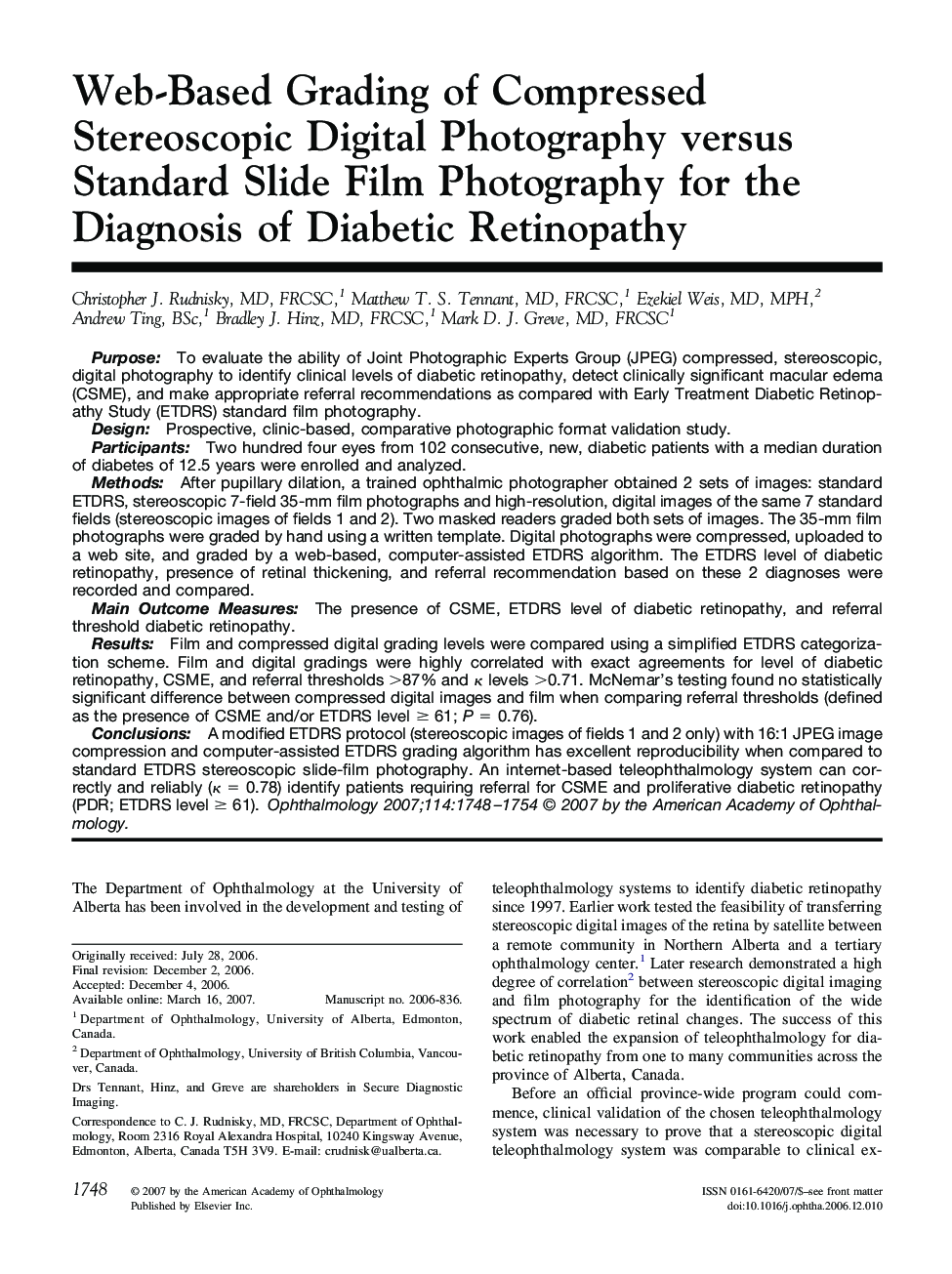| Article ID | Journal | Published Year | Pages | File Type |
|---|---|---|---|---|
| 4029212 | Ophthalmology | 2007 | 7 Pages |
PurposeTo evaluate the ability of Joint Photographic Experts Group (JPEG) compressed, stereoscopic, digital photography to identify clinical levels of diabetic retinopathy, detect clinically significant macular edema (CSME), and make appropriate referral recommendations as compared with Early Treatment Diabetic Retinopathy Study (ETDRS) standard film photography.DesignProspective, clinic-based, comparative photographic format validation study.ParticipantsTwo hundred four eyes from 102 consecutive, new, diabetic patients with a median duration of diabetes of 12.5 years were enrolled and analyzed.MethodsAfter pupillary dilation, a trained ophthalmic photographer obtained 2 sets of images: standard ETDRS, stereoscopic 7-field 35-mm film photographs and high-resolution, digital images of the same 7 standard fields (stereoscopic images of fields 1 and 2). Two masked readers graded both sets of images. The 35-mm film photographs were graded by hand using a written template. Digital photographs were compressed, uploaded to a web site, and graded by a web-based, computer-assisted ETDRS algorithm. The ETDRS level of diabetic retinopathy, presence of retinal thickening, and referral recommendation based on these 2 diagnoses were recorded and compared.Main Outcome MeasuresThe presence of CSME, ETDRS level of diabetic retinopathy, and referral threshold diabetic retinopathy.ResultsFilm and compressed digital grading levels were compared using a simplified ETDRS categorization scheme. Film and digital gradings were highly correlated with exact agreements for level of diabetic retinopathy, CSME, and referral thresholds >87% and κ levels >0.71. McNemar’s testing found no statistically significant difference between compressed digital images and film when comparing referral thresholds (defined as the presence of CSME and/or ETDRS level ≥ 61; P = 0.76).ConclusionsA modified ETDRS protocol (stereoscopic images of fields 1 and 2 only) with 16:1 JPEG image compression and computer-assisted ETDRS grading algorithm has excellent reproducibility when compared to standard ETDRS stereoscopic slide-film photography. An internet-based teleophthalmology system can correctly and reliably (κ = 0.78) identify patients requiring referral for CSME and proliferative diabetic retinopathy (PDR; ETDRS level ≥ 61).
